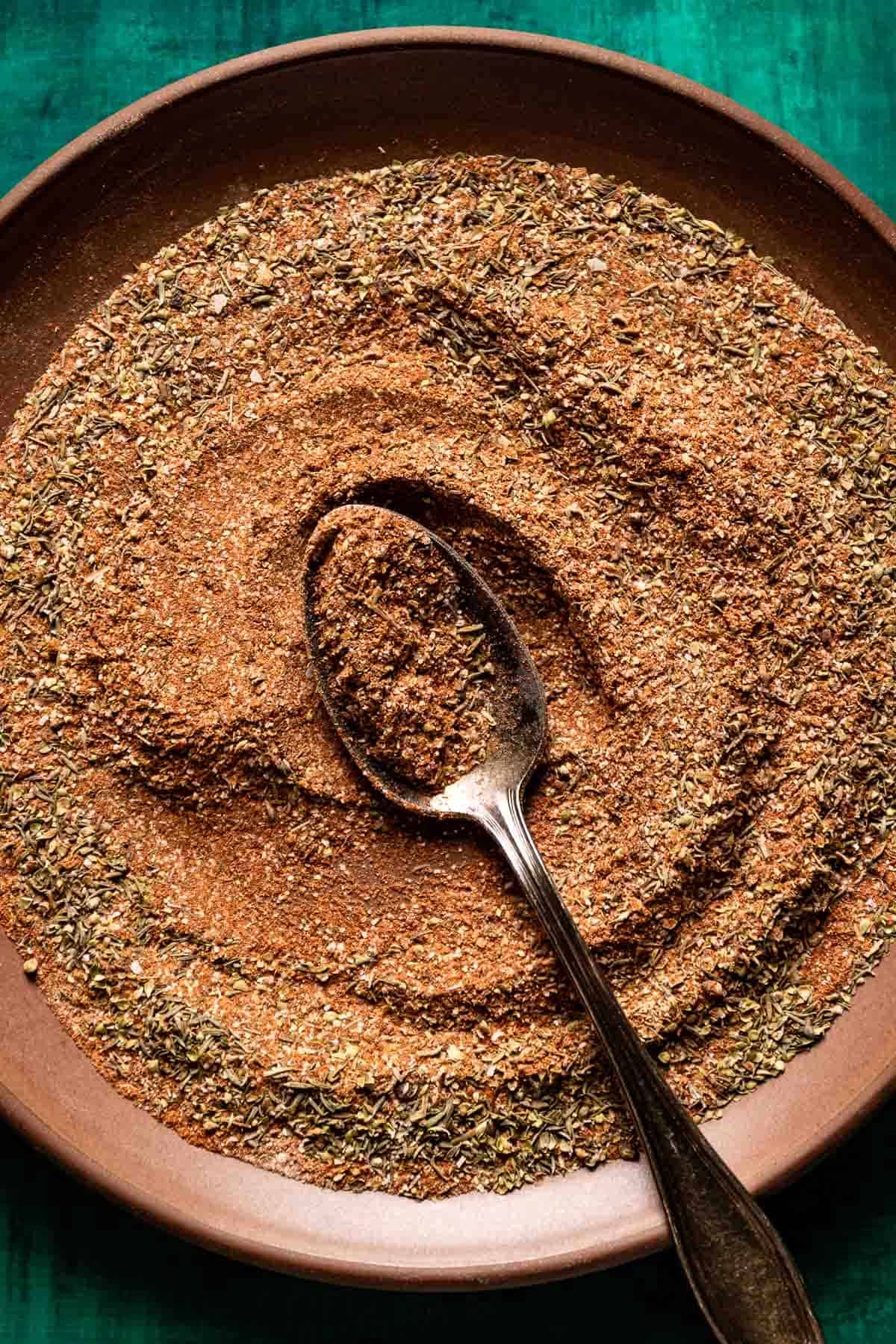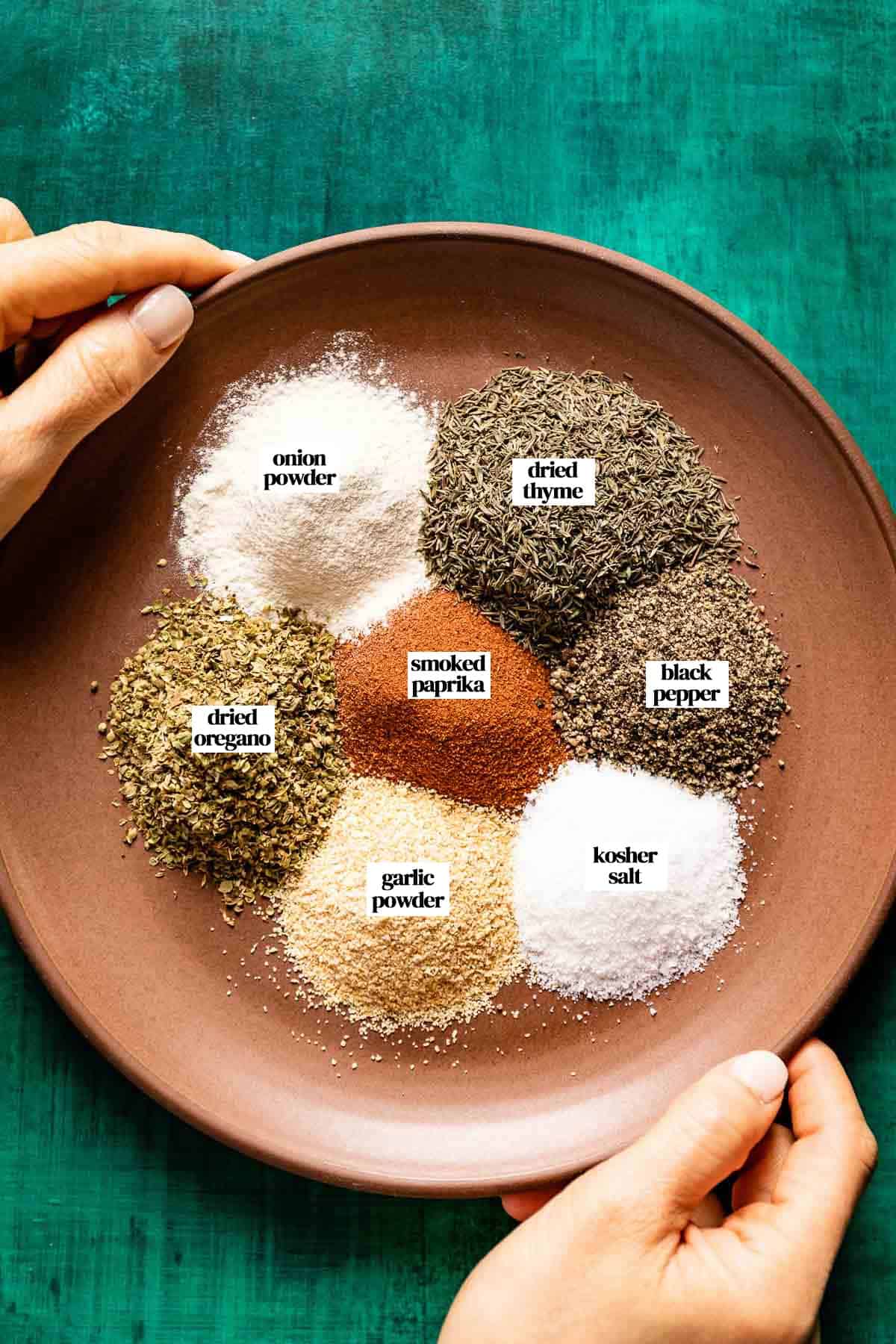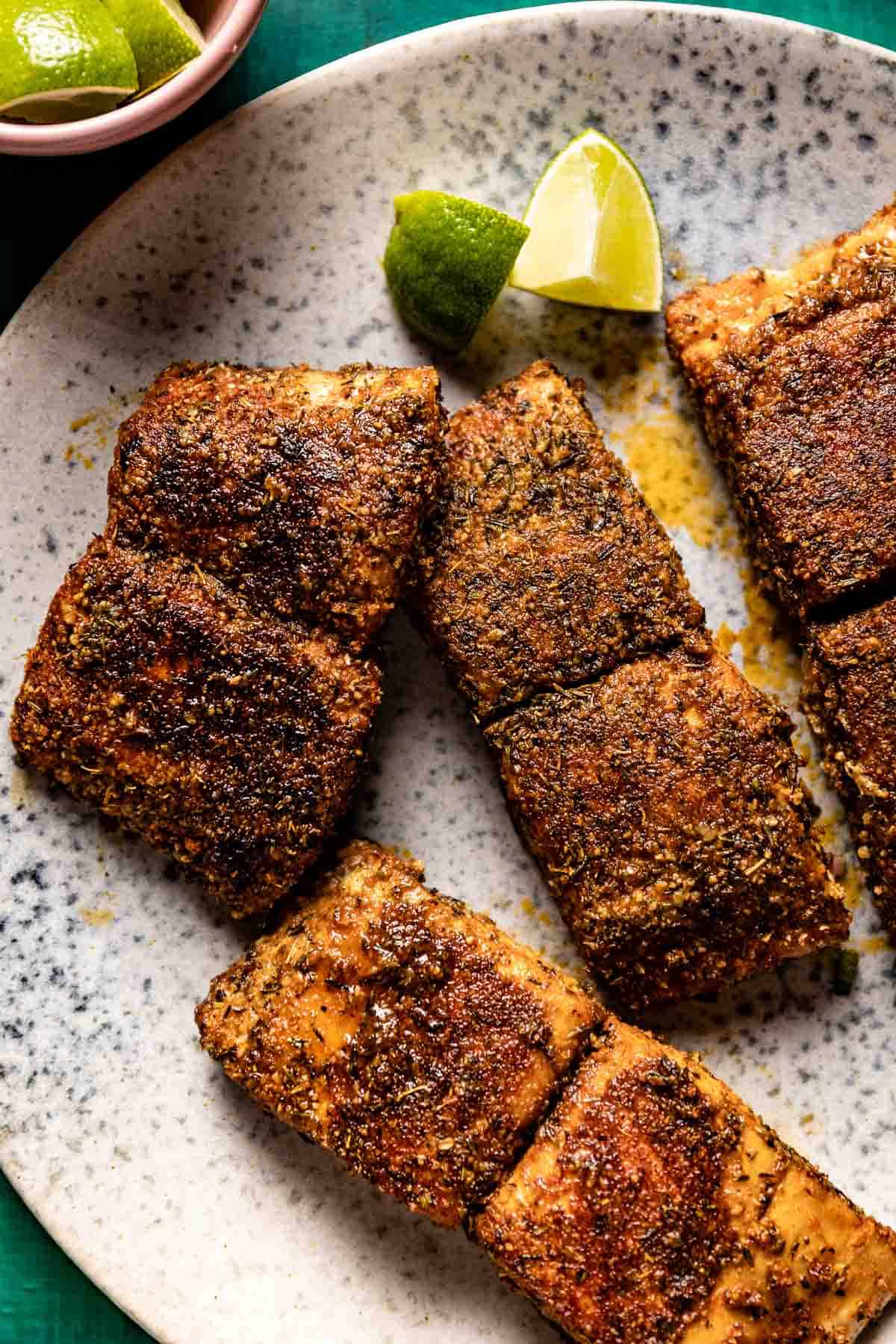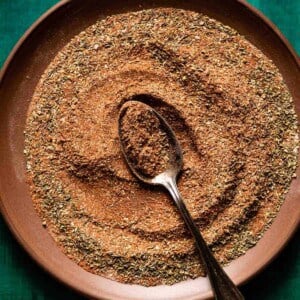What is Blackened Seasoning?
Blackened seasoning, also referred to as “Blackening Seasoning”, is a traditional Louisiana spice blend that creates a crisp, blackened exterior when added to meat, poultry, or seafood and cooked in a hot cast iron skillet. Popularized by Paul Prudhomme, this technique of cooking and the seasoning mix is usually used when cooking seafood and chicken dishes, but you can also use a blackening rub on other meats—such as steak and pork—veggies, soups, grains, and even pasta. Popular in Cajun cooking, this iconic spice mixture often includes paprika, onion powder, garlic powder, cayenne pepper, thyme, oregano, black pepper, and salt.
What is in Blackened Seasoning?
You only need a handful of pantry-ready ingredients to make this iconic Louisianian spice mix:
Paprika: Smoked paprika is ideal for giving this Cajun blackened seasoning its signature smoky flavor. However, regular paprika will also work. Onion powder Garlic powder Dried oregano Dried thyme Ground black pepper Kosher salt: Salt is the key ingredient to livening up the other spices’ unique flavors. However, if you’re watching your sodium intake or simply want to limit how much salt you use, you can easily make a salt-free blackened seasoning by omitting the salt. Cayenne pepper: Though cayenne pepper is optional, it’s a great addition if you want to give your rub a spicy kick. Feel free to heat level according to your taste buds. Other optional additions: While these are the basic blackened spice mix ingredients, you can also add other spices for more complex flavor profiles. Some of my favorites include ground cumin, white pepper, and dried basil—though there are countless others to try.
How to Make It?
Making blackening seasoning is an easy way to infuse your kitchen with bold, aromatic flavors. With a total time of five minutes, making this recipe is as easy as it gets.
Expert Tips
There’s no guesswork when making this easy blackening seasoning recipe. These pro tips will make your kitchen smell like a gourmet market any day of the week.
Meat: The traditional way to enjoy this blackening spice blend is by using it to create a flavorful crust on meats. I love dredging my favorite meats (i.e., shrimp and salmon) through this homemade seasoning, making the perfect blackening recipe for fish, chicken, seafood, and steak. I even use this seasoning as the flavor base of my Blackened Mahi Mahi recipe. Vegetables: This blackening spice recipe is essential when adding a savory, piquant flavor to grilled or roasted vegetables. Sprinkle it on veggies like corn, zucchini, potatoes, and eggplant for a simple veggie dish. Pasta, rice, and grains: One of the best ways to use this versatile seasoning is in your favorite grain recipes. Add this secret ingredient to creamy pasta sauces, or sprinkle it in a bowl of plain rice to give it a kick of New Orleans flavor. Nuts and popcorn: Transform your everyday snacks into five-star fare by adding a dash of this robust seasoning. I love sprinkling this DIY blackened seasoning over a bowl of nuts or popcorn, giving each bite an out-of-this-world taste. Soups and stews: Just like Italian seasoning, this easy blackened seasoning recipe is just what you need to take your soup-making to the next level. With just a few simple ingredients, every tablespoon will burst with delicious, bold flavors.
Fresh spices: The best blackened seasoning begins with fresh spices. Not only do quality spices have a more potent flavor, but they’ll also keep your seasoning fresher for longer. Be sure to check the expiration date of all your ingredients before adding them to your mixture, and use new ingredients whenever possible. Sealed storage: Tightly seal your blackened seasoning in an airtight container to keep it fresh during storage. I also recommend placing your sealed seasoning in a cool, dark place to keep the flavors from drying out. Mix well: To give every teaspoon of this blackening spice mix a well-balanced taste, evenly blend the spices. Each spoonful should have an equal amount of every ingredient. Make it your own: The best part about the ingredients in blackened seasoning is how easy they are to adjust. Feel free to experiment with each spice’s proportions to satisfy your own preferences. For example, you could give your rub more heat by increasing the amount of cayenne pepper. Or, add more paprika for a smokier, deeper taste. Adjust salt: If you’d prefer a low-sodium blackening seasoning, add less salt to your mixture or omit it altogether. Safety: Proper air ventilation is a must when you cook with blackened seasoning. The high heat of the cooking process may cause your spices to smoke, resulting in coughing or irritation if inhaled directly. To avoid this from happening, I recommend turning on your kitchen’s overhead fan and, if possible, opening nearby windows.
Still have questions about this homemade blackened seasoning? Don’t worry! This simple guide covers everything from cajun seasoning vs. blackened seasoning to how to adjust spice levels. If you try this Blackening Seasoning recipe or any other recipe on Foolproof Living, please take a minute to rate the recipe and leave a comment below. It is a great help to others who are thinking of making the recipe. And if you took some pictures, be sure to share them on Instagram using #foolproofeats so I can share them on my stories.




